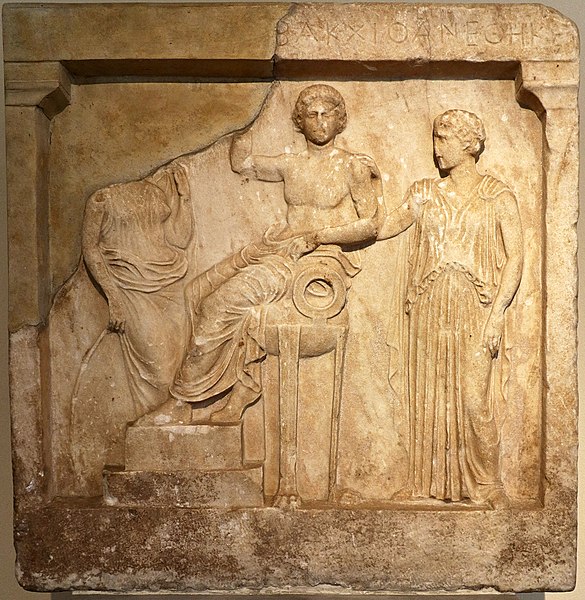The Twin Gods: Artemis and Apollo

Welcome back, Greeks and Geeks! This is the second part of my posts about Apollo and Artemis. You can check out the first post here.
Artemis is the Lady of the Hunt and the Moon, along with being the goddess of nature, childbirth, and chastity. She’s one of the main Greek Goddesses that remained a virgin and did not have any children.
Apollo is the God of Music and Healing, alongside the sun, prophecy, and archery and beauty. Very different from his sister, he had many lovers throughout his lifetime, and was often depicted in art as nude to show his entire beauty in every way.
Both Artemis and Apollo were very protective of their mother. Anytime anyone said something negative about her, they would retaliate in some way. If anyone tried to hurt her, the same thing happened.
In one instance, Niobe, a Queen, boasted to Leto about how many children she had given birth to. Niobe had twelve, children, while Leto only had two. When Artemis and Apollo learned of her gloating, they killed all of Niobe’s children. Apollo killed all the boys, and Artemis killed all the girls.

(TW) Another time, Tityus, a giant, tried to rape Leto (in different versions of this story, he succeeded in assaulting her). When the twins learned of this, they hunted him down and shot him with their arrows, killing him. His punishment in the Underworld was that vultures would eat his liver, as it constantly regenerated until the end of time.
Apollo also tracked down and killed the giant serpent Python, though the reasons why are not entirely known. Some versions of the myth say it is because it would not let Apollo found his oracle (Python was the oracle before Apollo), and other say it is because Python attacked Leto whilst she was pregnant.
Once Apollo had slain the snake, he founded his oracle at Delphi. In total, Apollo had four oracles, though there were five total oracles in Greek mythology.

Earlier, I mentioned that Artemis was a virgin goddess, like Athena and Hestia. Whenever people tried to take away her chastity, she punished them in pretty severe ways.
One time, the Hunter Actaeon saw her bathing. To punish him, she transformed him into a stag and set his hounds on him. Naturally, he died. Another time, the boy Siproites accidentally saw the goddess naked, but since he was still a child, Artemis just turned him into a girl, as a less harsh punishment.
Anytime anyone tried to force themselves on Artemis, like Orion may have, they were killed. Other gods helped enact punishment in some cases, but only when Artemis couldn’t herself.
Artemis had many worshipers, many of them young women who would pledge thems0elves to Artemis and declare themselves maidens forever. Artemis would protect her followers, enacting the same revenge on anyone who harmed their vows just like with herself. Sometimes, her followers would hunt alongside her, similar to how Orion did before he attempted to break Artemis’s vow of chastity.
In comparison to his sister, Apollo had many romances. However, most of them ended dreadfully. He has five famous love affairs: Coronis, Cassandra, Daphne, Cyparissus, and Hycanthius.
Coronis was the mother of his son, Asclepius, who would go on to become the God of Medicine (it was said that he learned how to bring people back from the dead, and for that Zeus killed him, so he could never do it again). While Coronis was still pregnant with him, however, she had an affair with Ischys. A white crow told Apollo what had happened, which lead to Apollo to order Artemis to kill Coronis and burn the crow. Since then, crows’ feathers have been black.
Cassandra was a Trojan Princess, and in an attempt to seduce her, Apollo granted her the gift of prophecy. However, she eventually turned him down. Since Apollo could not take away her gift, he instead cursed her. He took away her powers of persuasion, so that no one would ever believe a word she said, despite all her prophecies being true.

Most famous of Apollo’s lovers was Daphne. In some versions of the story, Daphne had vowed to Artemis to remain eternally innocent, and in others, she was pierced with an arrow from Eros, but one that made her dislike love rather than give in to it. In both versions, Apollo fell for Daphne and tried to win her over, to no avail. He chased her and chased her, until eventually she plead to her father, the river god Peneus, to save her. He transformed her into a plant, the laurel. This is where we get the laurel wreath, as Apollo now wears it forever as a declaration of his love for Daphne that will last for eternity.
Both of Apollo’s male lovers were also turned into plants. Cyparissus was turned into the cypress tree, after accidentally killing his pet deer, which was a gift from Apollo. Apollo did not want to do this, but reluctantly did so because Cyparissus was so distraught over it.
Hycanthius is the second most famous of Apollo’s lovers. Apollo and Zephyrus both loved Hycanthius, though Hycanthius only cared for Apollo. Jealous, Zephyrus manipulated the winds, resulting in Hycanthius being hit in the head with a throwing disc, fatally wounding him. From his blood, Apollo created the Hyacinth flower, so a part of him would be in the world forever.
Both Artemis and Apollo had many great adventures, and from them we can learn lessons of loyalty and protection. They were fiercely loyal to both each other and their mother, and protective of those they cared about as well.
As always, thank you for reading, and I hope to see you again soon. Αντίο, Σοφία.



